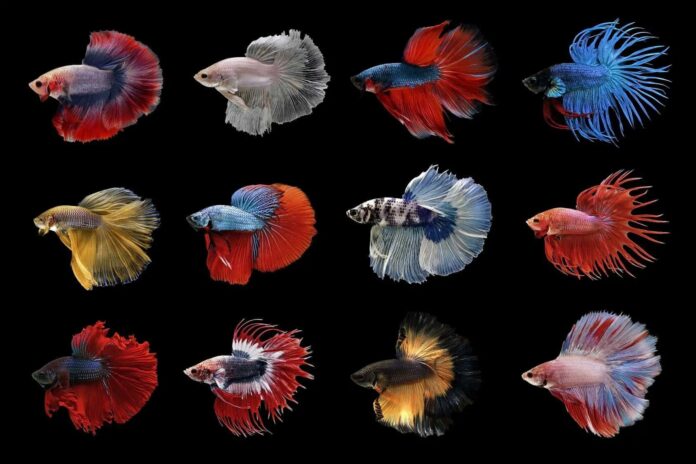Introduction
Betta fish, known for their flowing fins and bright colors, have become one of the most popular aquarium fish in the world. Their global fame is a relatively recent phenomenon. For centuries, betta fish lived a humble existence in the rice paddies and flooded forests of Southeast Asia.
The vibrant reds, blues, and greens of betta fish only emerged in the last 150 years through selective breeding. Wild betta fish are mostly dull green and brown. It was after specimens of Betta splendens were exported from their native Thailand and Cambodia in the 1800s that they became prized for their long, flowing fins and stunning colors.
Today, betta fish have been bred into hundreds of strains with extravagant fins like rose tails and crowntails. Alongside favorites like neon blues and turquoise, stunning shades of red have become one of the most coveted betta colors. This article will provide an in-depth look at the many varieties of red betta fish, their origins and habitat in the wild, proper care and tank requirements, interesting facts, and tips for selecting healthy red betta fish.
Different Types of Red Betta Fish
Red betta fish come in many varieties, ranging from solid red to multicolored mixes of red with other hues. Some of the most common types include:
Solid Red
As the name suggests, solid red bettas have scales that are entirely saturated in red pigment. The shade can range from light pinkish-orange to a deep, rich crimson. Their fins may be transparent or colored red as well. Solid reds are one of the most popular red betta varieties.
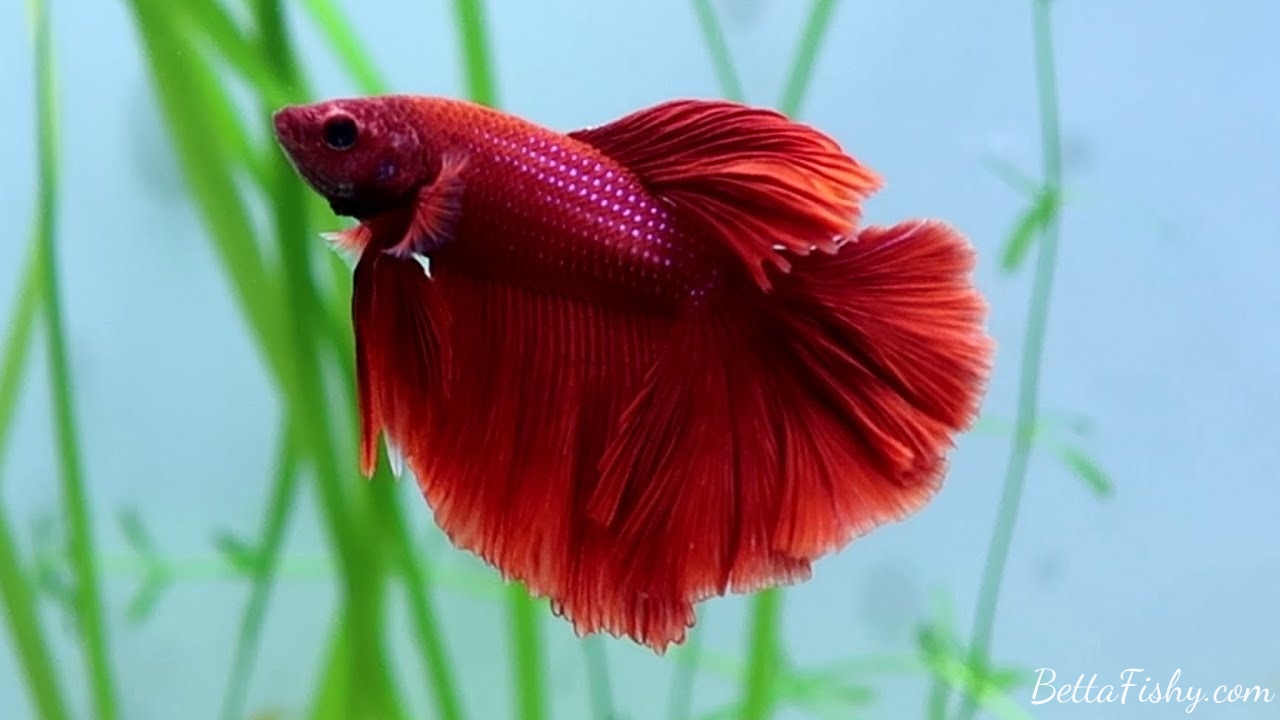
Multicolored Red
Multicolored red bettas have combinations of red with other colors like white, blue, black, green, or orange. Some examples are red/white and red/blue bettas, which display beautiful multicolored fins. The red is often concentrated around the head and body.
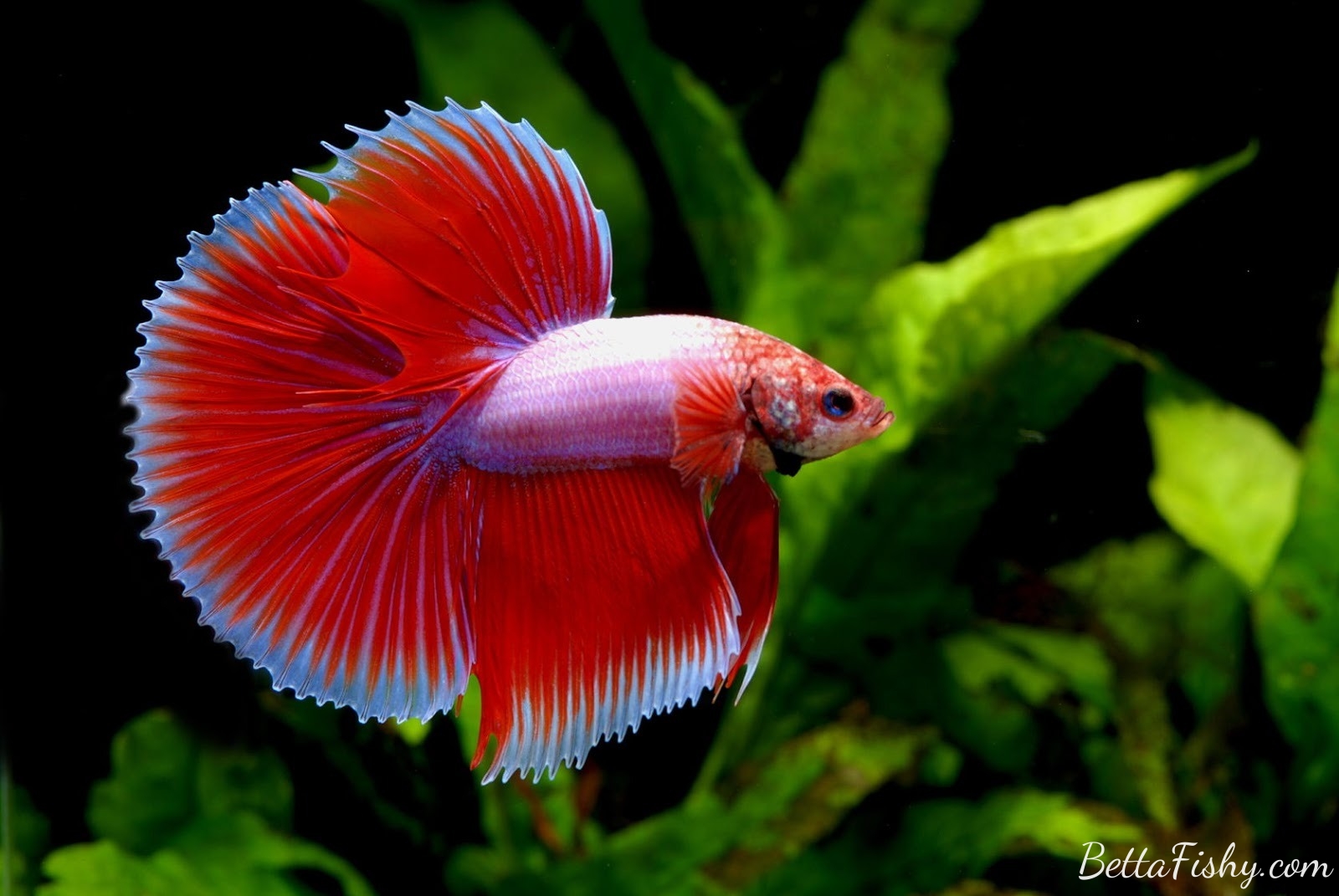
Marble Red
Marble bettas exhibit an irregular marbling pattern across their body and fins. The base color is red, overlaid with unpredictable blotches of white, blue, black or copper. Their patterns are unique and constantly changing.
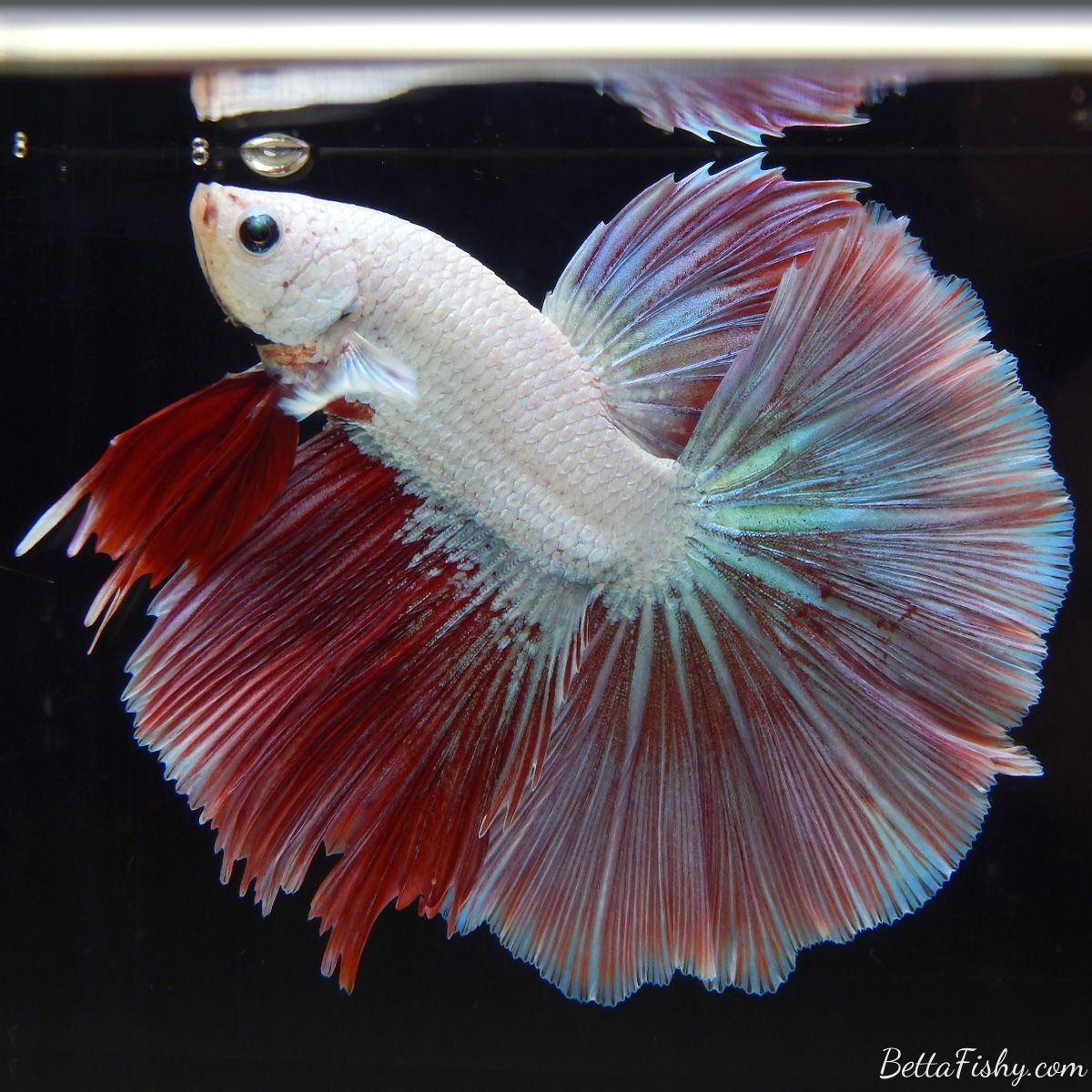
Cambodian
Cambodian bettas, sometimes called Thai bettas, have pale flesh-colored bodies with bright red fins and tails. Their minimal body pigment gives greater emphasis to the bold red accents.
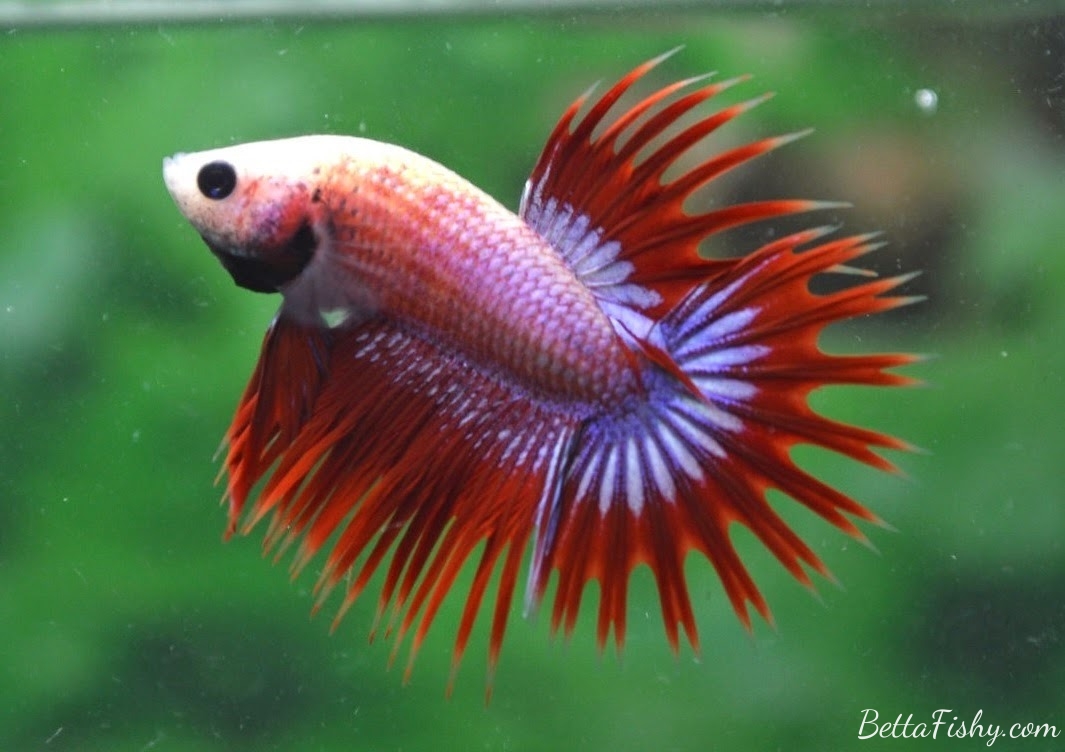
Wild Red Betta Fish
Wild betta fish with red coloration also exist in nature across parts of Asia. They have shorter fins and a leaner profile compared to showier domestic breeds. Some examples are Betta imbellis and Betta smaragdina.
Images of red bettas can help showcase the diversity of color patterns within this category. Solid reds tend to have the most uniform color coverage, while multicolored and marble bettas dazzle with their unique designs.

Origins and Natural Habitat of Red Bettas
Red bettas originate from Southeast Asia, primarily Thailand, Cambodia, Vietnam and Laos. According to National Geographic, bettas are native to “shallow freshwater habitats such as rice paddies, drainage ditches, slow moving streams and stagnant pools.”
In the wild, red bettas live in warm, shallow bodies of fresh water like rice paddies, marshes, and ponds with dense vegetation. The water in their natural habitat is typically very slow moving or completely still. They thrive in temperatures between 75-82°F.
Red bettas prefer shallow water that is less than 3 feet deep, often living in as little as 1 foot of water. This warm, tranquil water with dense plant coverage provides them with adequate food sources, spawning sites, and protection from predators.
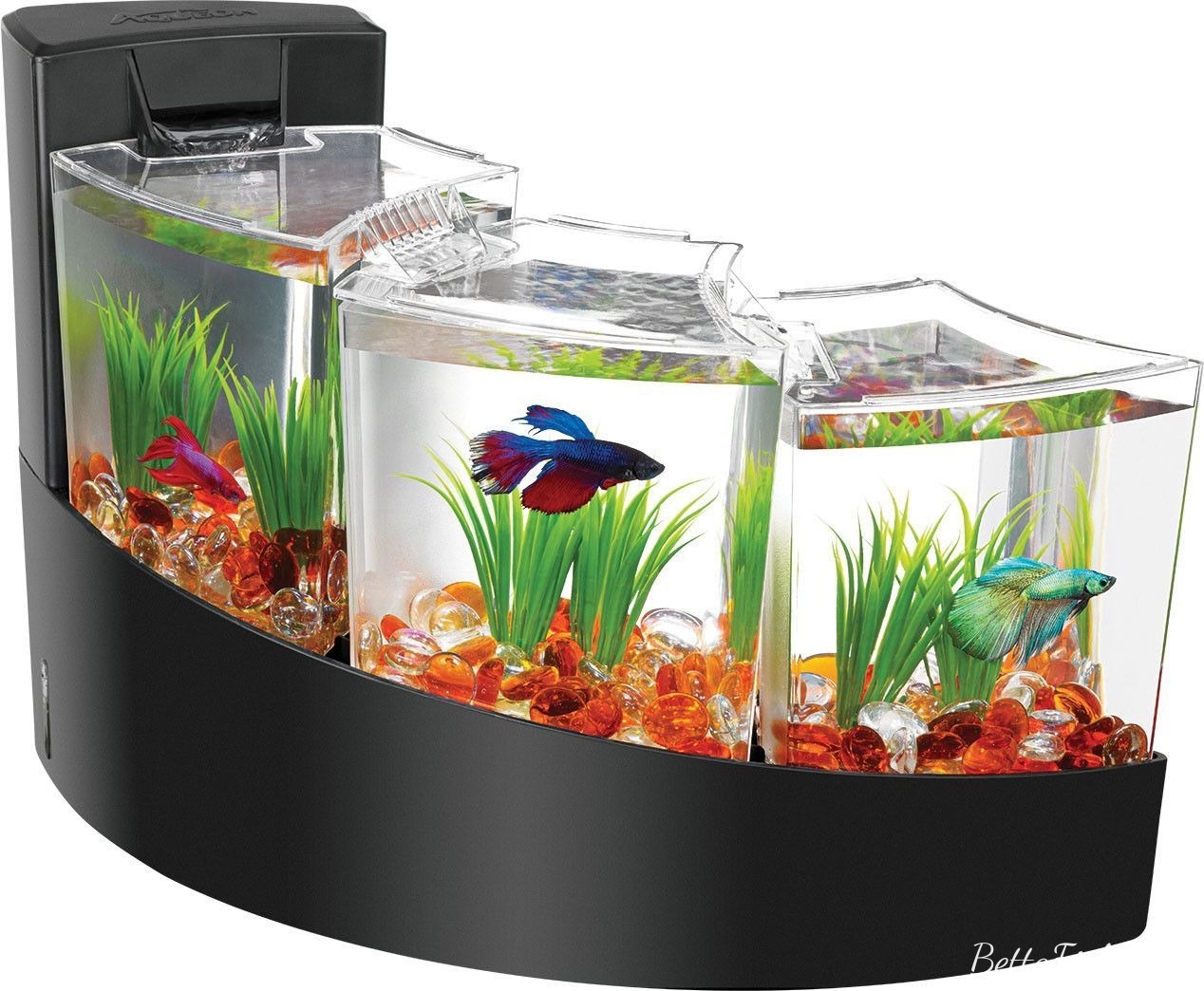
While vibrant red bettas are commonly found in fish stores today, in the wild they exhibit more subtle coloration consisting of dark green, brown, grey, and copper hues. This natural coloration helps camouflage them in their native marshy environments.
Care Requirements for Red Bettas
Red bettas have similar care needs as other betta varieties. Here are some key things to consider for keeping your red betta healthy and happy:
Proper tank setup is important. Red bettas should be housed in a tank of at least 5 gallons. The tank should have a heater to keep the water between 75-82°F and a filter to maintain water quality. Make sure the tank is cycled before adding your betta. Include plenty of live or silk plants and hiding spots. A lid is also recommended as bettas may jump.
In terms of tankmates, red bettas are best housed alone. They tend to be aggressive and may attack fish with flashy fins or colors. Snails, ghost shrimp, or African dwarf frogs can be tried but watch for signs of aggression. It’s best not to mix bettas.
Offer a high quality betta pellet as the staple diet. Feed 2-3 pellets twice a day. Supplement with occasional frozen or live foods like brine shrimp or bloodworms for variety. Proper nutrition is key for good health.

With proper care, red bettas can live 2-5 years. Keep their water clean, feed a good diet, and watch for signs of disease to maximize lifespan.
Interesting Facts About Red Bettas
Red bettas are known for being more aggressive than other colored varieties. Males in particular are very territorial and will flare out their gill covers, spread their fins, and charge at any perceived threat. Their aggression stems from their origins as fighting fish in Thailand.
Another fascinating trait of red bettas is the bubble nests that males construct to house eggs during breeding. They blow bubbles at the surface of the water, collecting them together until a literal bubble nest forms. The male will entice a female to lay eggs in this nest, fertilize them, and then guard them until they hatch.
There are clear physical differences between male and female red bettas. Males have larger fins, brighter colors, and the aforementioned bubble nest building behavior. Females have shorter fins and plainer coloration. This sexual dimorphism allows the male to attract mates and defend their territory.
Red bettas exhibit incredible diversity in their coloration and patterns due to selective breeding. Solid red is the most common, but there are also red and white, red and blue, and marble varieties. The intensity of red can range from pale orange to deep crimson. There are also wild betta species with red coloration.
The popularity of red bettas as pets arose from their bright colors, flowing fins, and lively personalities. They are fairly easy fish to care for compared to other exotic tropical fish. Red bettas stand out in home aquariums and remain one of the most sought after betta colors.

Tips for Keeping Red Bettas Happy
If you want to keep your red betta healthy and thriving, there are some key things to focus on. Providing proper nutrition, an enriching habitat, and tank mates are important factors for betta happiness. Here are some top tips for keeping red bettas happy in captivity:
Choosing the right tank mates is crucial for bettas. Male bettas will fight with other male bettas, so only one male should be kept per tank. Females can sometimes live together peacefully in a larger tank. Good tank mates for bettas include shrimp, snails, African Dwarf Frogs, and small peaceful community fish like tetras and cory catfish. Avoid fin-nipping fish that may harm bettas.
Providing enrichment helps prevent boredom and stress. Live plants, rocks, driftwood, and aquarium decor create a stimulating environment. Make sure decor has smooth edges and won’t tear fins. Adding an air-powered sponge filter provides oxygenation. Bettas also enjoy resting near the surface, so floating plants like frogbit are great additions.
Watch for signs of stress like clamped fins, lethargy, loss of appetite, and rapid gill movement. Frequent water changes, reducing tank mates, and optimizing water parameters can relieve stress. Make sure the water stays warm (76-82°F) and pH is between 6.8-7.4.
Preventing disease starts with clean water and a balanced diet. Perform partial water changes 1-2 times per week. Feed a variety of foods like pellets, frozen foods, and live treats. Quarantine new fish to avoid introducing pathogens. Recognize disease early and medicate appropriately to support health.

Unique Red Betta Tail Types
One of the most distinguishing features of betta fish are their elaborate and beautiful tail types. Red bettas showcase a stunning array of flowing, ruffled, and spiked tail varieties.
Crowntail
Crowntail bettas have an iconic look with spiky, separated rays extending from their tail and fins. The ends of the rays look like they have been sharply cut, giving them a very unique and eye-catching appearance. Red crowntails make these protruding rays really stand out.
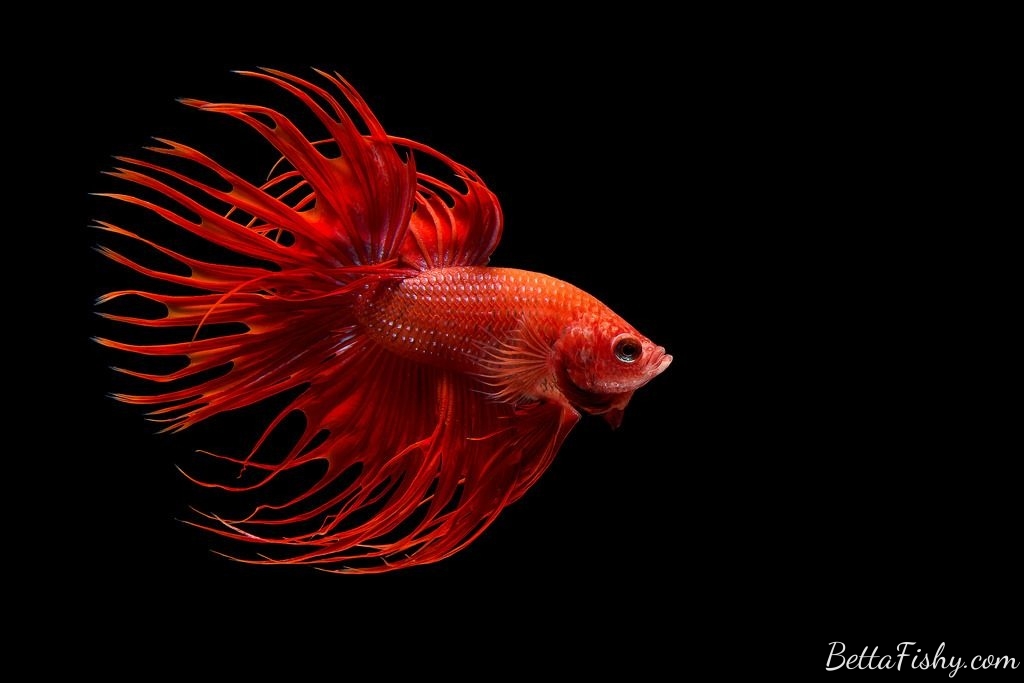
Halfmoon
Halfmoon bettas have the most sought after tail type among enthusiasts. Their tails curve into an almost perfect 180 degree angle when flared, forming the shape of a half moon. Solid red halfmoons display this half circle shape beautifully when viewed from above.

Veiltail
Veiltail bettas have extremely long, flowing fins that gracefully drape downwards from their body. Red veiltails showcase incredibly vibrant, solid red color in their voluminous tails and oversized fins. The veiltail is the most common tail type.
Plakat
Plakat bettas have short, rounded tails and minimal finnage compared to other varieties. This gives them a very bold, assertive look. Red plakats retain brilliant color despite their shorter tails and fins. Their agile swimming makes them very fun to watch.

Double Tail
Double tail bettas have a mutation that gives them a beautiful split caudal fin that forms two distinct lobes. Red double tails have striking, solid color across both tail lobes. The double tails are prized for their eye-catching fins.
There are so many amazing red betta varieties out there. Part of the fun of the hobby is appreciating their diversity!
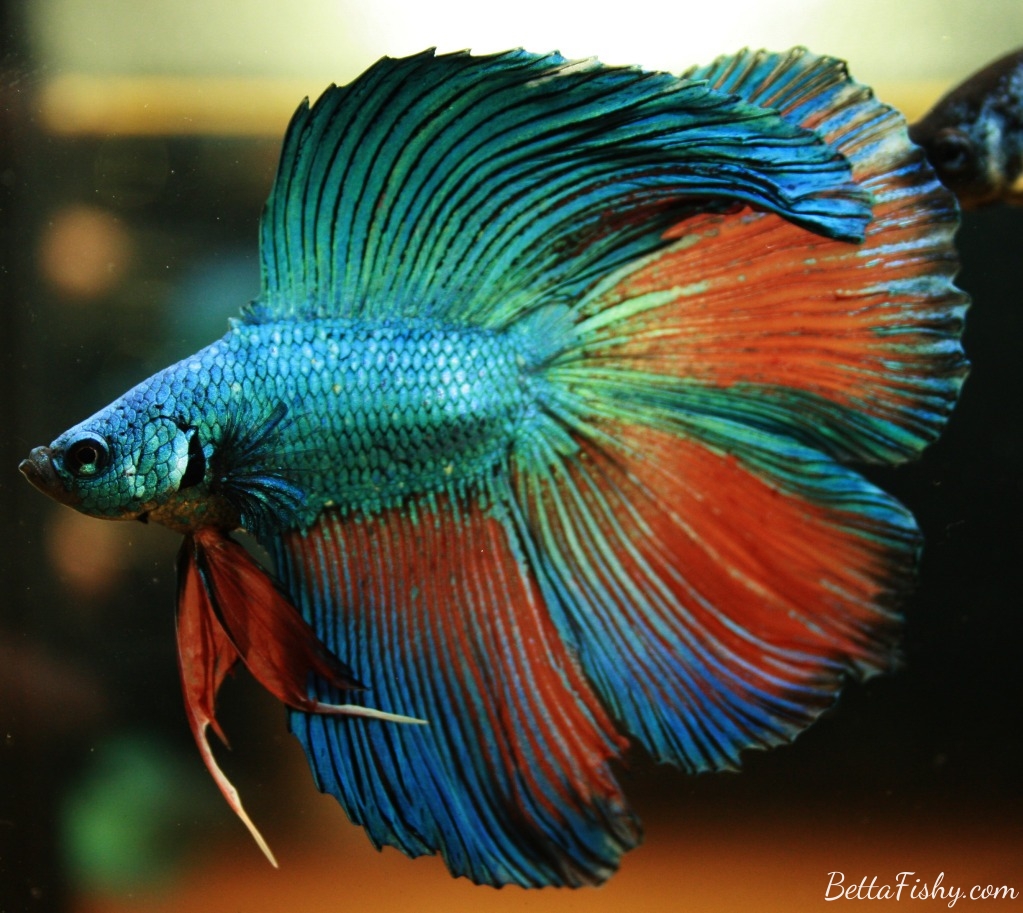
Conclusion
Red betta fish are truly one of the most spectacular freshwater fish available in the aquarium trade. Their vibrant crimson fins and bodies seem to glow under aquarium lighting. While bettas are well known for their aggression towards other bettas, they can make fantastic pets when properly cared for. Red varieties are especially prized for their intense, eye-catching colors.
Red bettas are more than just beautiful fish. They each have their own personality that you can discover over time. Watching their bubble nest building behaviors and flashy fin displays never gets old! We hope this overview on the care, history, and traits of red betta fish has been helpful. Feel free to revisit it anytime you need a refresher on keeping these spectacular fish.

